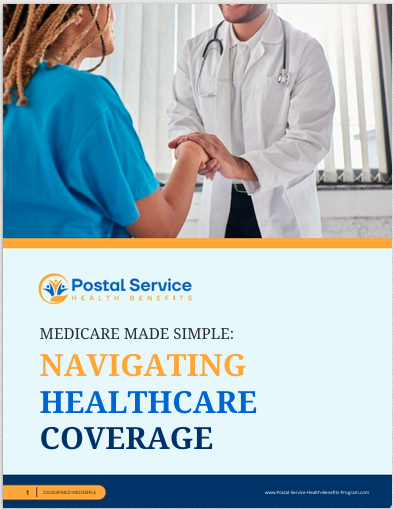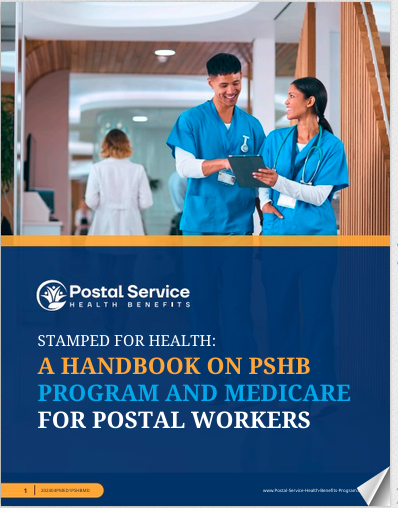Key Takeaways
-
Copayments can vary due to factors like in-network vs. out-of-network providers, plan structure, and Medicare integration.
-
Choosing the right Postal Service Health Benefits (PSHB) plan and utilizing cost-saving strategies can help keep your healthcare expenses manageable.
Understanding Why Copayments Fluctuate
If you’ve ever been surprised by a copayment at the doctor’s office or pharmacy, you’re not alone. Healthcare costs, especially under the Postal Service Health Benefits (PSHB) program, can sometimes feel unpredictable. However, there are clear reasons why your copayments may change, and knowing these factors can help you control your out-of-pocket expenses.
The Role of Network Providers
One of the biggest factors affecting copayments is whether you’re seeing an in-network or out-of-network provider. Here’s how it works:
-
In-Network Providers – These healthcare professionals and facilities have agreements with your PSHB plan to provide services at a negotiated rate. This means lower copayments and reduced overall costs.
-
Out-of-Network Providers – If you see a provider outside of your plan’s network, expect significantly higher copayments, or even full responsibility for the bill, depending on your coverage.
To avoid unexpected costs, always check if your provider is in-network before scheduling an appointment. You can typically find this information through your plan’s online provider directory or by calling customer service.
-
Emergency Situations – If you require urgent care but are away from home, out-of-network charges may apply unless the situation is classified as a true emergency. Some PSHB plans provide coverage for urgent care centers that work with the plan even if you are in a different state.
Differences in Plan Types
Not all PSHB plans have the same cost structure. Depending on the type of plan you choose, copayments may differ:
-
High-Deductible Health Plans (HDHPs) – These plans typically have lower monthly premiums but require you to meet a deductible before copayments apply. They often come with Health Savings Account (HSA) options, allowing you to set aside pre-tax dollars for medical expenses.
-
Standard Plans – These offer more predictable copayments but may come with higher monthly premiums. They are ideal for those who require frequent medical visits and prefer stable costs.
-
Medicare-Integrated Plans – If you’re a retiree enrolled in Medicare, some PSHB plans coordinate benefits, potentially reducing or eliminating certain copayments. These plans often waive deductibles and lower cost-sharing when Medicare is the primary payer.
Understanding the differences between these plans can help you choose the right option based on your health needs and budget.
How Medicare Integration Impacts Copayments
For PSHB retirees enrolled in Medicare, your copayments may be different from those of active postal employees. Medicare integration can lead to lower costs in many cases. Here’s how:
-
Medicare Part B Enrollment – Some PSHB plans coordinate with Medicare Part B, meaning Medicare pays first, and your PSHB plan covers the remainder, reducing or eliminating copayments.
-
Prescription Drug Coverage – Medicare-eligible retirees are automatically enrolled in an Employer Group Waiver Plan (EGWP) for prescription drugs, which may lower out-of-pocket expenses compared to standalone Part D plans.
-
Hospital and Specialist Visits – If your PSHB plan coordinates with Medicare, hospital stays and specialist visits may have little to no copayment, significantly reducing your healthcare costs.
-
Durable Medical Equipment (DME) – Some retirees require medical equipment, such as wheelchairs, oxygen tanks, or CPAP machines. Medicare Part B often covers a portion of these costs, with PSHB plans picking up the remainder, further reducing your expenses.
If you’re eligible for Medicare, reviewing how your PSHB plan coordinates benefits can help you maximize savings. You should also consider whether enrolling in Medicare Part B is the best financial decision for you based on your plan’s benefits.
Managing Copayments for Prescription Medications
Prescription drug costs can add up quickly, but understanding how copayments work can help you minimize expenses. Key factors include:
-
Drug Tiers – Many PSHB prescription plans categorize drugs into different tiers, with generic medications having the lowest copayments and specialty drugs having the highest.
-
Preferred Pharmacies – Using in-network or preferred pharmacies can lower copayments, while out-of-network pharmacies may result in higher costs.
-
Mail-Order Options – Some plans offer mail-order services for maintenance medications, often with lower copayments for 90-day supplies.
-
Step Therapy Requirements – Some plans may require you to try lower-cost medications before covering higher-cost alternatives.
-
Prior Authorization – Some medications require approval from your insurance provider before they are covered. Failing to get prior authorization may result in full payment responsibility.
By checking your plan’s formulary and pharmacy network, you can avoid paying more than necessary for prescriptions. Reviewing your medications annually can help ensure you’re using the most cost-effective options available.
Tips to Keep Your Healthcare Costs Low
While some healthcare expenses are unavoidable, there are strategies to help reduce your out-of-pocket costs under PSHB:
1. Use Preventive Services
Most PSHB plans cover preventive care, such as vaccinations, annual checkups, and screenings, with no copayment when using in-network providers. Taking advantage of these services can help you avoid more costly medical issues later.
2. Compare Plan Options During Open Season
Since PSHB plans vary in terms of copayments and out-of-pocket expenses, reviewing your options during the Open Season (November–December) can help you select a plan that best fits your needs and budget.
3. Consider Medicare Enrollment If You’re Eligible
If you’re a postal retiree, enrolling in Medicare can reduce your healthcare costs, especially when paired with a PSHB plan that coordinates benefits effectively. Medicare Part B can help lower copayments for doctor visits and other medical services.
4. Choose In-Network Providers
Whenever possible, opt for in-network doctors, hospitals, and pharmacies to ensure you’re paying the lowest copayments allowed under your plan.
5. Ask About Generic Medications
When prescribed medication, ask your doctor if a generic alternative is available. Generics typically have lower copayments compared to brand-name drugs.
6. Review Your Explanation of Benefits (EOB)
Your EOB statement provides details on what your plan paid and what you owe. Checking these statements can help you spot billing errors and ensure you’re not overpaying for services.
7. Consider a Health Savings Account (HSA) or Flexible Spending Account (FSA)
If your PSHB plan offers an HSA or FSA option, contributing pre-tax dollars can help cover eligible healthcare expenses, including copayments.
8. Look for Cost Assistance Programs
Certain programs help reduce costs for eligible retirees and employees, such as assistance with high-cost prescriptions. Check with your plan provider to see if you qualify for any savings programs.
9. Keep Track of Your Medical Expenses
Maintaining a record of your medical expenses throughout the year can help you budget for future costs, track deductible progress, and identify areas where you might save money.
Make Informed Choices to Manage Your Healthcare Expenses
Understanding why copayments vary and how you can control your healthcare costs is essential, especially under the Postal Service Health Benefits program. Whether you’re an active employee or a retiree, reviewing plan options, using in-network providers, and taking advantage of Medicare coordination can help keep expenses manageable. If you need further guidance on selecting the best PSHB plan for your needs, consider reaching out to a licensed agent listed on this website for professional advice.







